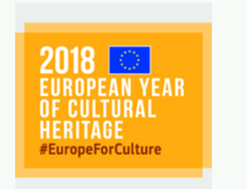Culture knows no borders
Cultural identity: building up from the connection to nature. Kemeri National Park, Latvia
Cultural Heritage in Europe: linking past and future
On the 26 June the European Parliament, in cooperation with the Culture and Education Committee organised a High-level conference entitled “Cultural Heritage in Europe: linking past and future”.

Conference Cultural heritage in Europe: linking past and future © European Parliament
The meeting brought together political leaders, policymakers, and stakeholders, as well as 44 high-level speakers that were invited to participate in three-panel debates:
- Cultural Heritage and Europeanness
- Preserving and promoting Cultural Heritage
- Innovation and the economic potential of Cultural Heritage
In addition, participants were surprised by live music performances by the European Union Youth Orchestra and by children singing in the choir Europa in Canto.
Europe is for the union of thoughts
During the discussion main point was the importance of the European identity, that need to be connected with contemporary society, with sustainable development, creating an ark of Noe with everything that is important for us and to preserve it. The European strength is the great variety presents and as the conductor and composer Ezio BOSSO said:
“Europe is an orchestra to turn to, roots are not an axis, but they are another part of the tree”.

©EUROPARC Federation
Culture knows only one heart

Our Heritage: where the
past meets the future
is the key message of the 2018
European Year of Cultural Heritage
More information at: http://europa.eu/cultural-heritage
Last but not least, Xing Qu, Deputy Director-General of UNESCO underlined the important cooperation between UNESCO and the European Union in the framework of the European Year of Cultural Heritage, sharing different initiatives that have been planned to mark the Year.
As highlighted in the European Commission’s spotlight publication on the Year of Cultural Heritage, approximately 300,000 people work directly in the EU’s cultural sector and the sector is indirectly responsible for the creation of around 7.8 million jobs. In addition, with 453 inscribed sites, Europe has almost half of UNESCO’s World Heritage List with further 89 elements inscribed on UNESCO’s Representative List of the Intangible Cultural Heritage of Humanity.
The conference was one of the key events of the European Year of Cultural Heritage which has seen thousands of activities organised across Europe to involve citizens more closely with Cultural Heritage at local, regional, national and European levels.
The full conference programme, documents and streaming can be consulted on the dedicated webpage of the European Parliament.
Check the EUROPARC initiatives for the Year of Cultural Heritage!
#EuropeForCulture